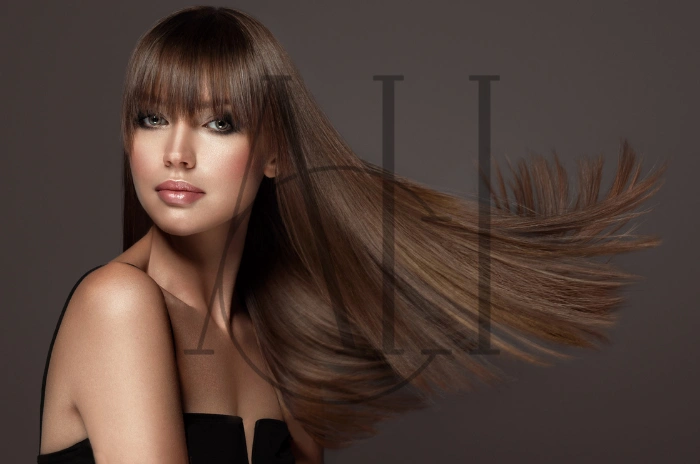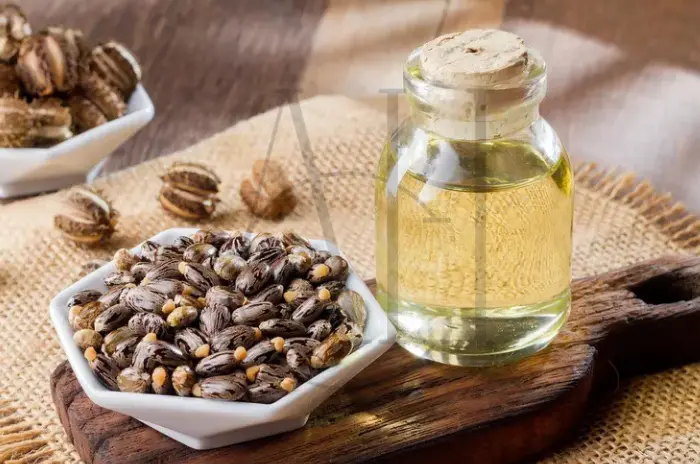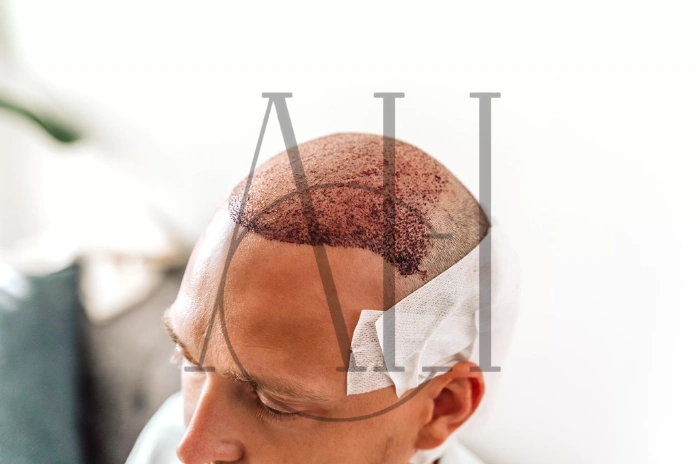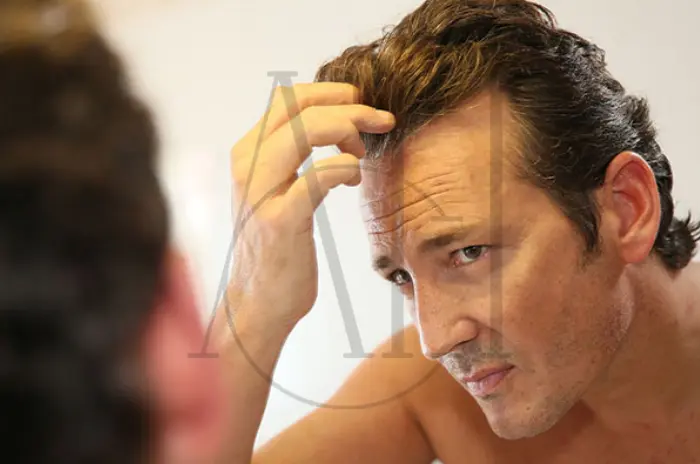Hair loss and thinning hair affect millions of people worldwide, leading many to search for effective solutions on how to grow hair faster naturally. While the market is flooded with products promising miraculous results, distinguishing between legitimate proven hair growth remedies and marketing hype can be challenging. This comprehensive guide explores nine evidence-based techniques that genuinely promote healthy hair growth and help you achieve thicker, stronger strands.
Understanding the science behind hair growth techniques is crucial for anyone seeking real results. From nutritional interventions and scalp care to advanced medical treatments, each approach targets different aspects of the hair growth cycle. By combining multiple methods strategically, you can create a comprehensive program that addresses the root causes of hair thinning and supports optimal follicle function.
Table of Contents
ToggleUnderstanding Hair Growth Basics
The Science Behind Hair Growth (Anagen, Catagen, Telogen Phases)
The hair growth cycle consists of three distinct phases that determine how your hair develops and sheds. The anagen phase, lasting 2-7 years, represents the active growth period when follicles produce new hair cells. During this stage, proper nutrition and scalp health directly impact growth rate and hair quality.
The catagen phase serves as a transitional period lasting 2-3 weeks, where hair growth slows and the follicle begins to shrink. Finally, the telogen phase represents a 2-3 month resting period before the hair naturally sheds and the cycle restarts. Understanding these phases helps explain why natural hair growth remedies require patience and consistency to show results.
Factors like age, genetics, hormones, and nutrition significantly influence how long each phase lasts. By supporting your follicles with targeted interventions, you can potentially extend the anagen phase and improve the overall health of emerging hair strands.
Common Causes of Hair Loss (And How to Fix Them)
Hair loss causes vary widely, but the most common include androgenetic alopecia (pattern baldness), nutritional deficiencies, hormonal imbalances, and physical trauma to the scalp. Identifying the underlying cause is essential for selecting the most effective treatment approach.
Stress hair loss, known as telogen effluvium, occurs when physical or emotional stress pushes hair follicles into the resting phase prematurely. This condition often resolves naturally once stress levels decrease, but supporting recovery with proper nutrition and gentle hair care accelerates the process.
Other factors contributing to hair thinning include thyroid disorders, iron deficiency, excessive heat styling, and certain medications. A thorough evaluation by a healthcare provider can help identify specific causes and guide treatment decisions for optimal results.
Clean & Stimulate Your Scalp
Scalp Massage for Improved Blood Flow
Scalp massage for hair growth represents one of the most accessible and effective techniques for promoting circulation to hair follicles. Research demonstrates that regular massage increases blood flow, delivers essential nutrients to follicles, and may help extend the anagen growth phase.
Performing daily 5-10 minute massages using gentle circular motions with your fingertips can significantly improve scalp health. The mechanical stimulation helps remove dead skin cells, reduces inflammation, and creates an optimal environment for healthy hair growth.
Studies suggest that consistent scalp massage over several months can lead to measurable improvements in hair thickness. The technique works by stretching the cells within the dermal papilla, potentially influencing gene expression related to hair growth.
Best Cleansing and Exfoliating Habits
Maintaining a clean scalp environment is fundamental for optimal hair growth. Excess sebum, product buildup, and dead skin cells can clog follicles and inhibit new growth. Regular cleansing with gentle, sulfate-free shampoos removes impurities without stripping natural oils.
Weekly scalp exfoliation using specialized scrubs or gentle brushing helps remove buildup and stimulates circulation. This practice prevents follicle blockage and ensures that hair growth supplements and topical treatments can penetrate effectively.
Prevent hair damage by avoiding over-washing, which can lead to dryness and irritation. Most people benefit from washing 2-3 times per week, adjusting frequency based on hair type and lifestyle factors.
Essential Oils That Promote Circulation
Essential oils for hair growth offer natural alternatives for stimulating scalp circulation and supporting follicle health. Rosemary oil hair growth benefits have been extensively studied, with research showing comparable results to minoxidil in some cases.
Tea tree oil provides antimicrobial properties that help maintain scalp health, while peppermint oil creates a cooling sensation that increases blood flow to follicles. Always dilute essential oils with carrier oils like jojoba or coconut oil to prevent irritation.
Regular application of essential oil blends, combined with massage, can enhance the absorption of nutrients and create an environment conducive to natural hair growth. Consistency is key, with most users seeing results after 3-6 months of regular use.
Eat a Nutrient-Rich, Balanced Diet
Protein: Eggs, Fish, Legumes & Collagen for Keratin
Hair consists primarily of keratin, a protein that requires adequate amino acid intake for proper synthesis. A diet for hair growth must include high-quality protein sources like eggs, fish, legumes, and lean meats to provide the building blocks for strong hair strands.
Biotin collagen peptides hair growth supplements can complement dietary protein intake, especially for individuals with limited protein consumption. Collagen peptides contain specific amino acids that support keratin production and may improve hair strength and elasticity.
Fish rich in omega-3 fatty acids, such as salmon and sardines, provide both protein and essential fats that support scalp health and reduce inflammation. Aim for 0.8-1.2 grams of protein per kilogram of body weight daily to support optimal hair growth.
Vitamins & Minerals: Iron, Zinc, Vitamin D, Biotin
Vitamins for hair growth play crucial roles in follicle function and hair quality. Iron deficiency is one of the most common nutritional causes of hair loss, particularly in women. Regular blood testing can identify deficiencies early.
Zinc supports protein synthesis and cell division in hair follicles, while vitamin D helps create new follicles and may influence the hair growth cycle. Biotin for hair growth supports keratin production, though deficiency is rare in healthy individuals.
B-complex vitamins, including B12 and folate, support cell division and DNA synthesis in rapidly growing hair follicles. A comprehensive multivitamin can help ensure adequate intake of these essential nutrients.
Magnesium-Rich Foods That Benefit Follicles
Magnesium foods for hair growth include dark leafy greens, nuts, seeds, and whole grains. This mineral supports over 300 enzymatic reactions in the body, including those involved in protein synthesis and cell division.
Magnesium deficiency can contribute to hair thinning by affecting calcium metabolism and potentially disrupting the hair growth cycle. Incorporating magnesium-rich foods into your daily diet supports overall follicle health and function.
Nuts like almonds and pumpkin seeds provide both magnesium and zinc, making them excellent choices for supporting healthy hair growth. Aim for 300-400mg of magnesium daily through food sources or supplements if needed.
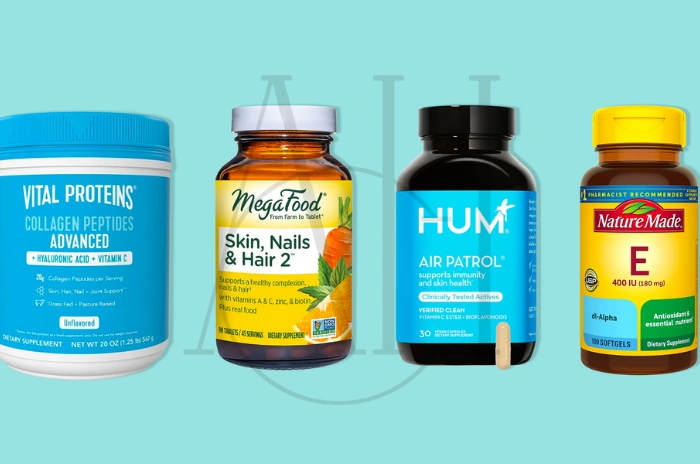
Use Evidence-Based Supplements & Topicals
Biotin, Collagen Peptides & Saw Palmetto
Best hair growth supplements include those with scientific backing for their effects on hair health. Biotin supplements may benefit individuals with deficiency, though most people obtain adequate amounts through diet alone.
Collagen peptides provide amino acids that support keratin production and may improve hair strength and growth rate. Studies suggest that regular supplementation can lead to measurable improvements in hair thickness and quality.
Saw palmetto extract may help block DHT (dihydrotestosterone), a hormone linked to pattern baldness. While more research is needed, some studies suggest potential benefits for both men and women experiencing hormonal hair loss.
Minoxidil, Finasteride (for non-genetic loss contexts)
Minoxidil for hair growth represents one of the most studied and effective topical treatments available. This FDA-approved medication increases blood flow to follicles and may extend the anagen growth phase.
Minoxidil for hair growth side effects can include scalp irritation, unwanted facial hair growth, and initial increased shedding. Most side effects are mild and resolve with continued use or dosage adjustment.
Finasteride, available by prescription, works by blocking DHT production and can be effective for pattern baldness. However, it’s important to discuss potential side effects with a healthcare provider before starting treatment.
Natural Oils: Rosemary, Tea Tree, Pumpkin Seed
Does rosemary oil grow hair is a common question with encouraging scientific support. Studies comparing rosemary oil to minoxidil showed similar improvements in hair count after six months of use.
Tea tree oil provides antimicrobial benefits that help maintain scalp health and prevent conditions that might inhibit hair growth. Its anti-inflammatory properties can also soothe irritated scalp conditions.
Pumpkin seed oil contains compounds that may help block DHT naturally, potentially offering benefits for hormone-related hair loss. Regular application combined with scalp massage can enhance absorption and effectiveness.
Technology-Based Growth Methods
Low-Level Laser Therapy (LLLT): Helmets, Combs, Caps
LLLT hair growth helmet review studies demonstrate that low-level laser therapy can stimulate cellular activity in hair follicles through photobiomodulation. This non-invasive treatment uses specific wavelengths of light to potentially increase hair density and thickness.
Low level laser therapy hair growth devices include helmets, combs, and caps that deliver controlled light exposure to the scalp. Most devices require 20-30 minute treatment sessions several times per week for optimal results.
Clinical studies suggest that LLLT can be effective for both men and women with androgenetic alopecia, with improvements typically visible after 12-26 weeks of consistent use. The therapy appears to work by increasing cellular energy production in follicles.
PRP (Platelet-Rich Plasma) Treatments
PRP hair treatment cost and results vary by provider and location, but this procedure involves drawing the patient’s blood, concentrating the platelets, and injecting the plasma into the scalp. The growth factors in platelets may stimulate dormant follicles.
PRP hair treatment typically requires multiple sessions spaced 4-6 weeks apart, with maintenance treatments every 6-12 months. Results can include increased hair density, thickness, and overall scalp health.
While more expensive than topical treatments, PRP offers a natural approach using the body’s own healing factors. Success rates vary, but many patients report noticeable improvements after 3-6 months of treatment.
Emerging Therapies: Stem Cells & Exosome-Based Regeneration
Stem cell therapy represents the cutting edge of hair restoration, with research exploring how these cells might regenerate damaged follicles or create entirely new ones. While still largely experimental, early results show promise.
Exosome therapy involves using cell-derived vesicles that contain growth factors and signaling molecules. These treatments aim to rejuvenate aging follicles and improve the scalp environment for hair growth.
Both therapies are currently expensive and not widely available, but ongoing research continues to refine techniques and improve outcomes. Future developments may make these treatments more accessible and effective.
Minimize Damage to Encourage Healthy Growth
Limit Heat Styling, Chemical Treatments & Coloring
Prevent hair damage by reducing exposure to high temperatures from styling tools. Excessive heat can weaken hair proteins, leading to breakage and the appearance of thinner hair. When heat styling is necessary, use heat protectant products and lower temperature settings.
Chemical treatments like perms, relaxers, and frequent coloring can compromise hair structure and lead to breakage. If you choose to use these treatments, space them out appropriately and follow with intensive conditioning treatments.
Professional treatments performed by experienced stylists tend to cause less damage than at-home applications. Always discuss your hair growth goals with your stylist to develop a plan that minimizes damage while achieving your desired look.
Avoid Tight Hairstyles and Excessive Brushing
Traction alopecia results from consistent tension on hair follicles from tight hairstyles like ponytails, braids, or hair extensions. This mechanical stress can permanently damage follicles if continued over time.
Reduce hair shedding naturally by using gentle brushing techniques and appropriate tools. Wide-tooth combs work best for detangling wet hair, while natural bristle brushes can distribute oils without causing excessive pulling.
Sleeping on silk or satin pillowcases reduces friction and prevents hair breakage during sleep. Loose braids or silk hair wraps can also protect hair while sleeping and minimize morning tangles.
Trim Split Ends Regularly
Regular trimming removes damaged ends that can travel up the hair shaft and cause further breakage. While trimming doesn’t directly affect growth rate, it helps maintain hair health and prevents the need for more dramatic cuts later.
Split ends make hair appear thinner and less healthy, so regular maintenance cuts every 6-8 weeks can help your hair look fuller and more vibrant. This practice supports your overall hair growth tips strategy.
Focus on maintaining healthy ends rather than dramatic length if your primary goal is thicker, healthier-looking hair. A skilled stylist can help determine the optimal trimming schedule for your hair type and growth goals.
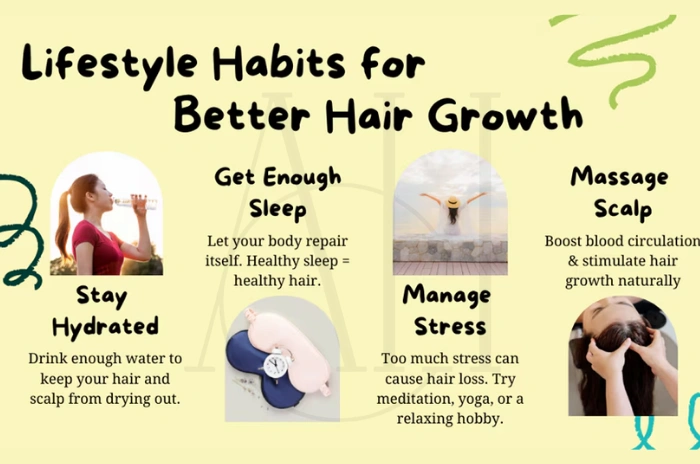
Lifestyle Habits That Support Hair Growth
Manage Stress and Enhance Sleep Quality
Stress hair loss occurs when chronic stress disrupts the normal hair growth cycle and pushes follicles into the resting phase prematurely. Implementing stress management techniques like meditation, exercise, or counseling can help restore normal growth patterns.
Quality sleep supports overall health and hormone regulation, both crucial for optimal hair growth. Aim for 7-9 hours of consistent sleep and maintain a regular sleep schedule to support your body’s natural rhythms.
Stress management becomes particularly important during major life changes, illness, or emotional challenges. Supporting your overall well-being directly benefits hair health and growth potential.
Stay Hydrated & Avoid Environmental Damage
Proper hydration supports cellular function throughout the body, including hair follicles. Dehydration can affect the quality and strength of newly growing hair, making adequate water intake essential for healthy hair growth.
Environmental factors like sun exposure, pollution, and harsh weather can damage hair and scalp. Wearing protective styles or coverings when outdoors helps minimize exposure to these damaging elements.
Air quality and water quality can also impact hair health. Consider using a shower filter if you have hard water, and be mindful of styling products that might build up and require clarifying treatments.
Follow a Consistent Hair Care Schedule (such as Capillary Scheduling)
Capillary scheduling involves rotating between moisturizing, protein, and clarifying treatments based on your hair’s specific needs. This systematic approach helps maintain optimal hair health and supports growth goals.
Consistency in your hair care routine allows you to track what works best for your hair type and make adjustments as needed. Keep a simple log of treatments and results to identify patterns and optimize your approach.
How to grow hair faster often comes down to patience and consistency rather than dramatic interventions. Establishing a sustainable routine increases your chances of long-term success with your hair growth goals.
Combining Approaches: Why Multi-Modal Works Best
Synergy of Diet, Topicals & Technology
How to thicken hair naturally often requires combining multiple approaches for optimal results. Nutritional support provides the building blocks for healthy hair, while topical treatments and technology directly stimulate follicle activity.
The synergistic effect of multiple interventions can produce better results than any single approach alone. For example, combining a nutrient-rich diet with scalp massage and topical treatments addresses hair growth from multiple angles.
This comprehensive approach also helps ensure that you’re addressing potential underlying causes of hair thinning, rather than just treating symptoms. Multiple interventions increase the likelihood of finding effective solutions for your specific situation.
How Often to Use Each Method for Real Results
How to regrow hair after thinning requires consistent application of chosen methods over time. Scalp massage can be performed daily, while essential oil treatments might be used 2-3 times per week to avoid overuse.
Supplements should be taken as directed, typically daily, while topical medications like minoxidil are usually applied twice daily. Technology-based treatments have specific protocols that should be followed for optimal results.
Creating a schedule that balances effectiveness with practicality increases adherence and improves outcomes. Start with one or two approaches and gradually add others as they become routine.
Expert Recommendations & Timelines
Hair growth experts typically recommend giving any new intervention at least 3-6 months to show results, as this aligns with the natural hair growth cycle. Changes in hair growth rate and quality take time to become visible.
Best hair growth products should be evaluated based on scientific evidence, user reviews, and your specific hair type and concerns. Consulting with a dermatologist or trichologist can help you select the most appropriate treatments.
| Treatment Method | Frequency | Expected Timeline | Effectiveness Level |
|---|---|---|---|
| Scalp Massage | Daily (5-10 min) | 6-12 weeks | Moderate |
| Minoxidil | Twice daily | 3-6 months | High |
| Rosemary Oil | 2-3 times/week | 3-6 months | Moderate-High |
| LLLT Devices | 3 times/week (20-30 min) | 12-26 weeks | Moderate |
| PRP Treatment | Monthly x 3, then maintenance | 3-6 months | High |
| Biotin Supplements | Daily | 8-12 weeks | Low-Moderate |
| Diet Changes | Daily | 2-4 months | Moderate |
| Stress Management | Daily | 2-3 months | Moderate |
Realistic expectations are crucial for success. Most people can expect to see initial improvements in hair quality and scalp health within 6-12 weeks, with more significant growth results visible after 4-6 months of consistent treatment.
Debunking Hair Growth Myths
Does Trimming Hair Really Make It Grow Faster?
Trimming hair does not affect the growth rate, which is determined by follicle activity at the scalp level. However, regular trimming prevents split ends from traveling up the hair shaft and causing breakage that makes hair appear thinner.
The confusion around this myth stems from the fact that well-maintained hair appears healthier and fuller, giving the impression of faster growth. Regular trims support overall hair health but don’t influence the actual rate of growth from the follicle.
Understanding this distinction helps set realistic expectations and focus efforts on interventions that actually affect follicle function and growth rate rather than just hair appearance.
The Truth About Hair Growth Supplements
While some supplements can support hair growth in individuals with specific deficiencies, most people with adequate nutrition won’t see dramatic improvements from supplements alone. The supplement industry often makes exaggerated claims about hair growth benefits.
Hair growth supplements work best when addressing specific nutritional deficiencies identified through blood testing. Random supplementation without understanding your nutritional status is unlikely to produce significant results.
Focus on maintaining a balanced diet rich in hair-supporting nutrients before turning to supplements. When supplements are warranted, choose those with scientific backing and realistic claims about expected results.
FAQ : 9 Real Hair Growth Techniques That Do Work for Thicker Healthier Hair
What are the different phases of hair growth?
Hair growth occurs in three phases: anagen (active growth lasting 2-7 years), catagen (transition phase lasting 2-3 weeks), and telogen (resting phase lasting 2-3 months before shedding).
What foods and nutrients are essential for healthy hair growth?
Essential nutrients include protein from eggs and fish, iron, zinc, vitamin D, biotin, and magnesium-rich foods like leafy greens and nuts.
What are some evidence-based supplements and topical treatments that promote hair growth?
Evidence-based options include minoxidil, biotin for deficient individuals, collagen peptides, rosemary oil, and saw palmetto extract.
How can technology help stimulate hair growth?
Low-level laser therapy (LLLT) devices and PRP treatments use light therapy and growth factors respectively to stimulate follicle activity and potentially increase hair density.
What lifestyle changes can I make to support hair growth and minimize damage?
Key changes include managing stress, getting adequate sleep, staying hydrated, limiting heat styling, avoiding tight hairstyles, and following a consistent hair care routine.
Does trimming hair make it grow faster, or are there other common hair growth myths?
Trimming doesn’t affect growth rate but prevents breakage; common myths include supplements working for everyone and overnight growth solutions being possible.
Why is a multi-modal approach often recommended for real hair growth results?
Combining diet, topical treatments, and technology addresses hair growth from multiple angles, creating synergistic effects that produce better results than single interventions alone.
How do scalp care practices, like massage and essential oils, contribute to hair growth?
Scalp massage increases blood circulation to follicles, while essential oils like rosemary provide additional stimulation and antimicrobial benefits for optimal scalp health.

